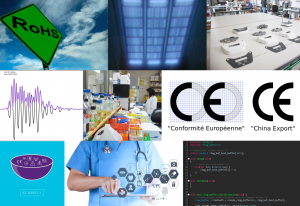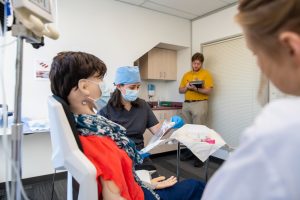 As an early-stage venture grows the process of technology transfer from an academic research laboratory to industry and/or scale-up setting can be a significant challenge for early-stage biotech companies.
As an early-stage venture grows the process of technology transfer from an academic research laboratory to industry and/or scale-up setting can be a significant challenge for early-stage biotech companies.
Transferring novel biotech platforms from academia into commercially relevant products requires a comprehensive mechanism that addresses funding, regulatory compliance, intellectual property, commercialization, competition, and other key issues — all of which can be achieved through a systems approach.
Often, this transition is led by expert biological scientists with in-depth knowledge in the biology, but limited familiarity with design, development, and regulatory processes. This may introduce business risks to the company during the technology transfer and product development.
This blog explores how systems engineering expertise and concepts, and the resulting multidisciplinary perspective, can help biotech companies overcome many of the challenges associated with technology transfer by providing a structured approach to design, development, and implementation.
- Requirements analysis and design: Systems engineering methodologies can be used to identify and analyze the requirements for the technology transfer process, the needs of the product target market, and to design an effective approach for meeting those requirements. This can include the use of tools such as functional flow diagrams, fault tree analysis, and failure modes and effects analysis. For example, most of the biotech platforms incorporate bioassays and fluid handling systems which are initially developed in laboratories. The transition of lab-based platforms to commercially relevant products can benefit from the application of these tools for determining the ideal assay components and workflow and developing safe and reliable biotech equipment.
- Risk management: FDA, Health Canada, and EMA (Australia) have strict regulatory processes that companies must follow to ensure human safety. Part of these processes is identifying and mitigating risks. Systems engineers own the documentation, tools and techniques that capture risk and mitigation strategies such as fault tree analysis, and failure modes and effects analysis. Engineers, scientists, regulatory experts, and quality personnel all provide input into the risk management process and Systems Engineers make sure that all relevant parties contribute. Eventually, these documents provide the foundation for regulatory submission, tech transfers, and commercialization.
- Process optimization: Systems engineering can be used to optimize the technology transfer process by analyzing and improving the interactions between different components of the process. Systems Engineers are able to look at the final product in a holistic manner (i.e., meeting the requirements, scalability, fitting into the proposed user environment) while acting as a navigator between different disciplines such as technical disciplines (e.g., mechanical and assay), QA/RA and the technical teams, and between different companies that are all involved in the design and manufacturing processes. This can help to improve efficiency and reduce costs in the whole process.
- Verification and Validation (V & V): Systems engineering can provide tools and techniques for verifying and validating the transferred technology, to ensure that it meets regulatory requirements and is safe and effective. Verification and validation are processes that form the basis of scientific activities in any biological laboratory that applies GLP (Good Lab Practices). Therefore, the fundamental techniques are there, but most of the time the application of those techniques in a structured manner is lacking and a systems engineering approach can guide the platform development process. Moreover, almost all the biotech equipment and bioprocessing tools such as IVD (In Vitro Diagnostic) devices and drug development equipment require specific analytical performance validation and instrument verification; therefore, they can benefit from the fundamental methods of verification in systems engineering (i.e., Inspection, Demonstration, Test, and Analysis), and development of the analytical method.
- Project and resource management: Systems engineering can be used to manage the technology transfer project by providing a structured approach to planning, scheduling, assigning specific tasks to the right disciplines, and monitoring the process. These help the project to stay on track and ensure it’s completed on time and within the budget.
- Time to market: Systems engineering can help biotech start-ups reduce the time to market by providing a structured approach to project management and efficient use of resources. Biotech equipment, including IVD devices, is a very competitive market, and on-time launching of the product and smooth implementation is very critical to the success of the business.
Overall, technology transfer from research to the industry can be a complex and challenging process for early-stage biotech companies. Systems engineering expertise is helpful to identify and overcome many challenges. The principles used can enhance biotech platform development by providing a systematic and holistic approach to the design, development, and implementation of the product.
Application of basic concepts of systems engineering, such as requirements analysis and management, process optimization, risk management, and verification and validation in the development of commercially relevant biotech equipment including in vitro diagnostic devices and bioprocessing tools can considerably enhance the quality, reliability, and scalability of the final product.
Image: StarFish Medical
- SEO Powered Content & PR Distribution. Get Amplified Today.
- EVM Finance. Unified Interface for Decentralized Finance. Access Here.
- Quantum Media Group. IR/PR Amplified. Access Here.
- PlatoAiStream. Web3 Data Intelligence. Knowledge Amplified. Access Here.
- Source: https://starfishmedical.com/blog/using-systems-engineering-to-improve-technology-transfer-for-early-stage-biotech-companies/
- :is
- 167
- 300
- 8
- a
- Able
- Academia
- academic
- academic research
- achieved
- activities
- addresses
- All
- an
- analysis
- Analytical
- analyze
- analyzing
- and
- any
- Application
- approach
- ARE
- AS
- associated
- At
- Australia
- basic
- basis
- BE
- benefit
- between
- biology
- biotech
- Blog
- budget
- business
- but
- by
- CAN
- Canada
- capture
- challenge
- challenges
- challenging
- COM
- commercialization
- commercially
- Companies
- company
- competition
- competitive
- Completed
- complex
- compliance
- components
- comprehensive
- concepts
- considerably
- contribute
- Costs
- critical
- Design
- determining
- developed
- developing
- Development
- Devices
- diagrams
- different
- disciplines
- Display
- documentation
- documents
- drug
- drug development
- during
- e
- early stage
- Effective
- effects
- efficiency
- efficient
- EMA
- Engineering
- Engineers
- enhance
- ensure
- Environment
- equipment
- Ether (ETH)
- eventually
- example
- expert
- expertise
- experts
- explores
- Failure
- Familiarity
- fda
- final
- fitting
- flow
- fluid
- follow
- For
- form
- Foundation
- from
- functional
- fundamental
- funding
- good
- Grows
- guide
- Handling
- Have
- Health
- help
- helpful
- Hidden
- holistic
- How
- HTTPS
- human
- i
- ideal
- identify
- identifying
- implementation
- improve
- improving
- in
- in-depth
- include
- Including
- incorporate
- industry
- initially
- input
- instrument
- intellectual
- intellectual property
- interactions
- into
- introduce
- involved
- issues
- IT
- Key
- knowledge
- lab
- laboratory
- launching
- Led
- Limited
- Look
- make
- manage
- management
- manner
- manufacturing
- many
- Market
- max-width
- May..
- mechanical
- mechanism
- meeting
- Meets
- method
- methodologies
- methods
- mitigating
- mitigating risks
- mitigation
- modes
- monitoring
- Moreover
- most
- multidisciplinary
- must
- Navigator
- needs
- novel
- of
- on
- optimization
- Optimize
- Other
- Overcome
- own
- part
- parties
- performance
- Personnel
- perspective
- planning
- platform
- Platforms
- plato
- Plato Data Intelligence
- PlatoData
- player
- practices
- principles
- process
- processes
- Product
- product development
- Products
- project
- project management
- property
- proposed
- provide
- providing
- quality
- reduce
- regulatory
- Regulatory Compliance
- relevant
- reliability
- reliable
- require
- Requirements
- requires
- research
- resource
- Resources
- resulting
- right
- Risk
- risk management
- risks
- safe
- Safety
- Scalability
- scale-up
- scheduling
- scientific
- scientists
- setting
- Share
- significant
- Simple
- smooth
- specific
- Starfish
- start-ups
- stay
- strategies
- strict
- structured
- submission
- success
- such
- sure
- Systems
- Target
- tasks
- teams
- tech
- Technical
- techniques
- Technology
- test
- that
- The
- There.
- therefore
- These
- they
- this
- those
- Through
- time
- to
- tools
- track
- transfer
- transferred
- transfers
- transition
- tree
- use
- used
- User
- validation
- venture
- Verification
- verifying
- very
- Video
- which
- while
- whole
- with
- within
- workflow
- youtube
- zephyrnet












